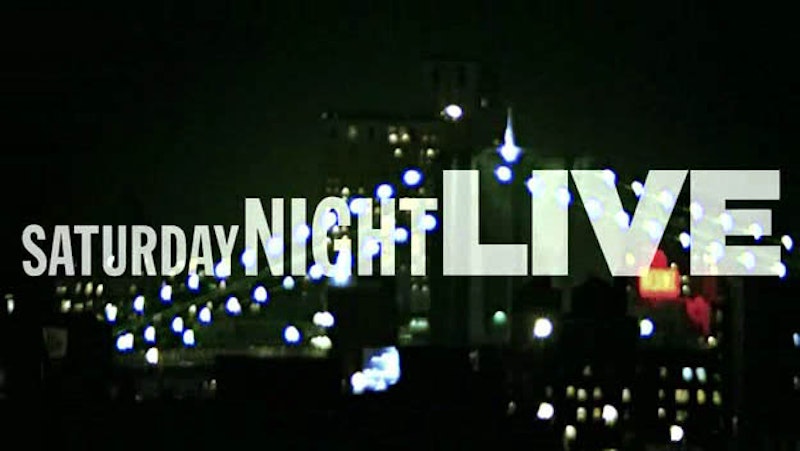Not much has changed at 30 Rock as Saturday Night Live begins its 36th season. A handful of semi-familiar faces were replaced by totally unfamiliar ones. The musical performances range from tediously phoned-in (Katy Perry and her predictably costumed retinue) to high-as-a-kite-concept, bat-shit insane (Kanye West performing “Power,” which must be seen to be believed). Tired sketch tropes (Kenan Thompson as Deandre Cole, self-indulgent gospel BET talk show host) and concepts with a surprising resiliency (Fred Armisen as Roger Brush, tactless day-time talk show producer) abound.
The fake commercials are at least fleetingly diverting; the SNL Digital Shorts are predictably insipid. Last year’s Jay-Z shouting out Betty White at the end of “Forever Young” is this year’s Brian Cranston saying “Once again, Kanye West, featuring Pusha T,“ maybe. Justin Timberlake apparently has his own cot not far from the soundstage, because he won‘t go away; Lorne Michaels continues to rope back departed cast members from funnier seasons for stunt cameos that are no longer really surprising; everybody involved is making, way, way too much money. Yet this season, Saturday Night Live has stumbled upon a way of making itself slightly more disturbing and uncomfortable to watch than it already is.
You know how, when you’re watching an NFL game, the announcer will talk about a certain player and an associated headshot, statistics, alma mater, etc. will materialize to provide you with a bit of perspective? You know how sometimes that headshot is 30 seconds of video, so that it’s almost as if that football player is nonchalantly watching you watch him, creating a weird hall-of-mirrors effect, because the player is actually playing football and not watching you watch him and the video footage was shot in the pre-season, or whatever? That’s sort of unnerving, isn’t it? (Also: commercials where a person appears to be frozen or stationary, as is a photograph, but the background is growing larger or shifting, creating the impression that the viewer’s sense of reality is slightly off kilter. There‘s an eyeglasses chain that‘s especially guilty of foisting these commercials on the public, or maybe it‘s whatever brand allows the lenses to change color depending on whether one‘s inside or outside.)
Saturday Night Live has topped this. For decades, the show attempted, valiantly, to assuage the frustration of watching a 90-minute show where commercials vastly outnumber skits by inserting artsy, electric-neon photographs of whichever celebs were hosting or singing or rocking America that particular evening. I always like to imagine that stars like J.Lo and Jeff Gordon and Jon Hamm have their people lobby the SNL front office for oversized prints of those things. But anyway now, when, say, the show is coming back from commercial and a leering Amy Poehler or a mugging Cranston greets you, they move, in a spectral, grainy circa-2010 horror flick kind of way; the face is in one position, and then, via whatever video effect is in use, shifts, like a cartoon where several stills have been removed, like Cranston or Poehler are incubators for ravenous demons who will reach through your television screen at 12:05 a.m. on Sunday morning to consume your soul—or at least startle the living fuck out of you.
SNL Ups Its Creepiness Quotient
And continues its slow decline.

